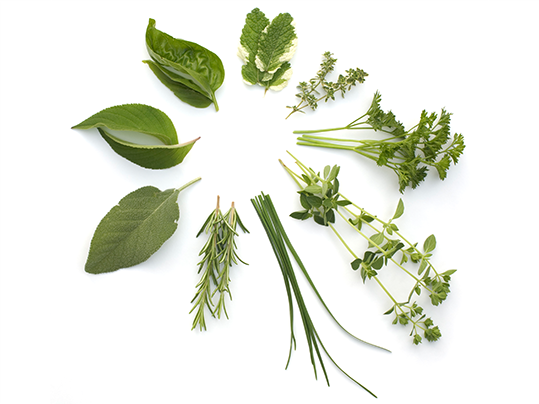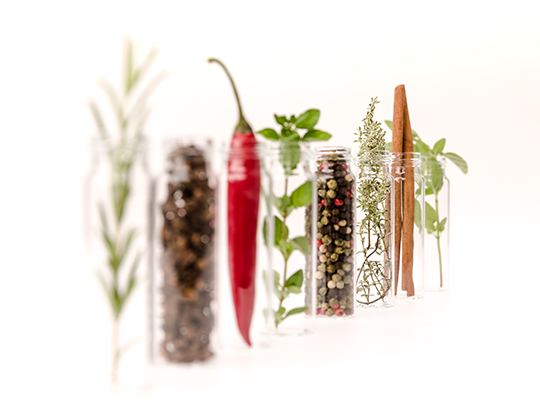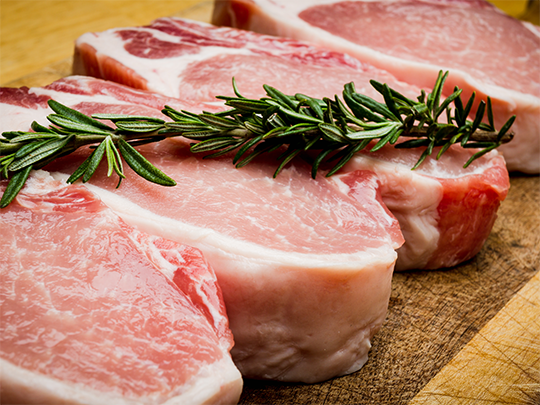Improving meat quality with phytogenics
Tenderness and palatability of meat are strongly related to the feeding of the animal. Read about three ways how phytogenics improve pork meat quality.

Good meat quality and phytogenics – a declaration of love
I admit it. I am a passionate meat eater. And because I value good meat, I also know that tenderness and palatability are strongly related to the feeding of the animal. Carcass and meat quality are not only influenced by the genetic line or sex of the pig – it is the feed and especially natural, phytogenic feed additives that form the i-dot and make a good piece of meat something special.
Improving meat quality with phytogenics – Here are three ways:

1. Phytogenics improve muscle growth
Did you know that aromatic phytogenics increase the palatability of the ration and thus the feed intake? An increased feed intake leads to higher average daily gains and thus shortens the fattening period. This has a positive effect on the profitability of the farmer. In addition to increased feed intake, selected phytogenics can positively influence protein synthesis or insulin metabolism: Several studies have shown that phytogenics are able to stimulate insulin secretion, increase tissue insulin sensitivity or increase the activity of proteins involved in the insulin signaling cascade within the cell. The upregulation of these functions leads to an increased expression of genes that are related to protein synthesis and cell proliferation and at the same time, inhibit apoptosis. Thus, the feeding of phytogenic feed additives (PFAs) can ultimately lead to increased muscle growth.
2. Phytogenics reduce lipid oxidation

The oxidation of fats in for example porc meat, the so-called lipid oxidation, has a negative influence on the appearance, taste, safety and nutritional value of animal products. To reduce this oxidative spoilage, synthetic antioxidants such as butylated hydroxytoluene are often used. However, these are suspected of having a negative impact on health. In addition to α-tocopherol, better known as vitamin E, which is considered a highly effective fat-soluble antioxidant and acceptable supplement in animal feed, phytogenic terpenes also provide a safe and natural solution: aromatic plants from the Labiatae family, such as thymol or carvacrol from thyme or oregano, also have proven antioxidant properties. These phytogenic antioxidants not only help protect food lipids from oxidative damage but can also affect lipid metabolism in animals.

3. Phytogenics stand for safety
A paradigm shift is taking place in animal nutrition: Today’s consumers are increasingly demanding “clean labels” and food that is produced transparently. The demand for tasty, high-quality and above all safe meat products is constantly increasing. Restaurant chains, food retailers and consumer brands are increasingly focusing on high animal welfare standards and the safest possible value chain without the use of antibiotic growth promoters in animal fattening. Phytogenics help to build a safe and sustainable bridge between animal production without antibiotic growth promoter and high performance. This makes it possible to produce a great meat quality.
Interested in consumer demands?
How do you like your pork meat?

Anne Oberdorf
Anne has always been fascinated by the unknown, the diversity and beauty of nature. Her love for nature brought her to Delacon in 2018 after studying agricultural sciences, where she worked as Technical Communications Manager and later as Product Manager Aquaculture. Since February 2021, she has been taking a new, natural career path outside of Delacon.










